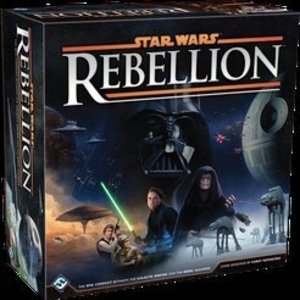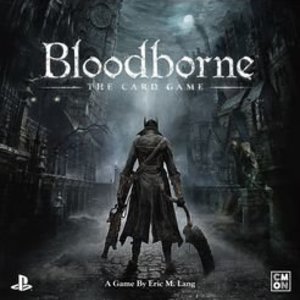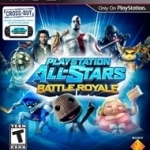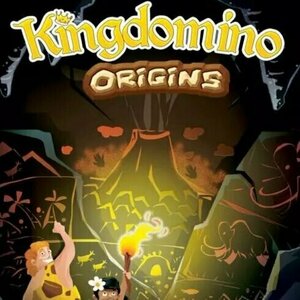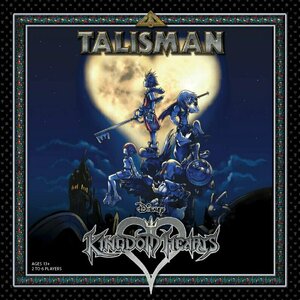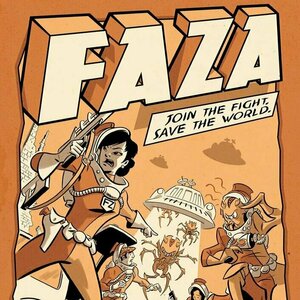Entertainment Editor (1988 KP) rated Star Wars: Rebellion in Tabletop Games
Mar 7, 2018
Loosely based on the 1998 video game of the same name, the board game version of Rebellion is ludicrously outsized. The galaxy, too large to fit on a single game board, here sprawls across two. Rebel and Imperial forces aren't represented by cardboard but by 153 plastic miniatures—including three Death Stars and two Super Star Destroyers.
Critic: Nate Anderson
Read the full review here: https://arstechnica.com/gaming/2016/03/star-wars-rebellion-review-a-fully-operational-4-hour-board-game/

Assassin's Creed: Odyssey
Video Game Watch
Set during the Peloponnesian War, an ancient conflict between Athens and Sparta that was a crucial...
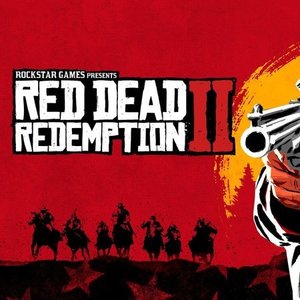
Red Dead Redemption 2
Video Game Watch
Developed by the creators of Grand Theft Auto V and Red Dead Redemption, Red Dead Redemption 2 is an...
Western
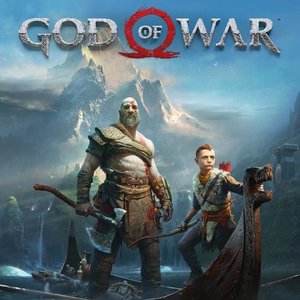
God of War
Video Game Watch
His vengeance against the gods of Olympus far behind him, Kratos now lives as a man in the lands of...
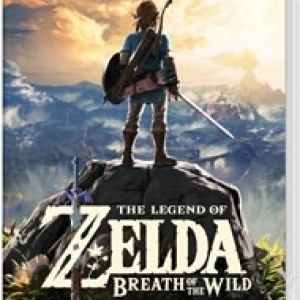
The Legend of Zelda: Breath of the Wild
Video Game Watch
Amnesiac protagonist Link awakens from a hundred-year slumber to a mysterious voice that guides him...
Zelda Nintendo Open-World Story

Horizon Zero Dawn
Video Game Watch
Explore a vibrant world rich with the beauty of nature – but inhabited by awe-inspiring, highly...
Horizon: Zero Dawn
and 5 other items
Matthew Krueger (10051 KP) rated the PlayStation version of Twisted Metal in Video Games
May 7, 2020 (Updated May 7, 2020)
Twisted Metal is a vehicular combat video game developed by SingleTrac, produced by Sony Interactive Studios America (now 989 Studios) and published by Sony Computer Entertainment for the PlayStation.
Twisted Metal is a vehicular combat game in which the player takes control of one of twelve unique vehicles. While in control of a vehicle, the player can accelerate, steer, brake, reverse, activate the turbo, turn tightly, toggle between and activate weapons using the game controller's d-pad and buttons.
The game takes place in the streets of Los Angeles on Christmas Eve, 2005. The contest featured in the game is the tenth annual running of the competition thus far.
The game's plot is centered on the titular competition in which various drivers in modified vehicles must destroy the other vehicles in an attempt to be the last one alive. The winner meets the organizer of the competition, a mysterious man named Calypso, who will grant the winner a single wish, regardless of price, size or even reality.
The Story: Once a year the legendary Calypso, a man who dwells beneath the streets of Los Angeles, holds the "Twisted Metal" competition. The contest takes place all around the Los Angeles area and calls upon drivers in various different vehicles to battle to the death. The contestants are selected and contacted by Calypso via an e-mail message that simply reads "WILL YOU DRIVE?" in red letters. The one driver still alive at the end of the night is granted a single wish, with no limits on price, size or, according to some, even reality.
Its a excellent game and a classic.
Connor Sheffield (293 KP) rated Bloodborne: The Card Game in Tabletop Games
Aug 20, 2018
From what I learned during my playthrough, this game is super fun and I can't wait to get my other friends to play it so we can play a proper 3-5 player game with the Hunters Nightmare Expansion including penalties to trophies etc.
This game requires tactics, teamwork and also careful planning to try and make sure your fellow hunters don't win. You can do this by using certain abilities of certain weapons that allow you to deal damage to the hunter yourself, allow the monster to deal damage or double damage to the player, or ensuring that you take little to no damage from the monster and allowing the other hunters to take the hit and/or fall. The game is very sneaky and you have to make sure that with the 7 card limit you have, that in the hunters dream you choose the right upgrades and new weapons and discard any others you won't need, but make sure that the cards you choose help kill the monster as well as hinder your fellow hunters.
However, you can choose to simply play the game and be fair to see who comes out on top by playing the right cards to hurt the monster more and not harm each other...but where's the fun in that?
If you've played the video game, then you'll love the card game as it has all your favourite elements such as blood echoes, weapons, health vials, molotovs, and of course the monsters! Including mini bosses and a single Final Boss card who's effects are apparent throughout the entire game. For example, the Vicar Amelia boss card, cuts players health's down from the maximum of 8, to the new maximum of 6 during the entire game no matter what other cards are played. If you have a card that says return to Max health, your new Max health is 6 which makes the game harder but also makes you think more strategically, and you have to ask yourself that one question each turn "Am I willing to take the risk?"
The payoff as in the video game, is sweet and the fall also as in the game, is bitter, especially if you took that chance whilst holding unbanked blood echoes.
My only issue with the game is that I believe there could have easily been some form of the game that allowed for just two players, but instead Myself and others like me on the internet have to come up with hosuerules, and be careful not to take away the fun of the game, as well as being careful not to drift to far from the original rules so that it doesn't become too easy. Because again, where's the fun in that?
I highly recommend this game and it's expansion to those who have the friends willing to play and not lose their sh*t when things don't go their way :')
Matthew Krueger (10051 KP) rated PlayStation All-Stars Battle Royale in Video Games
Dec 20, 2020
Anyways, this was Sony's 12 year answer to Smash Brothers. 12 years, is a little late Sony. And uhh it shows. Were as Nintendo games were made by Nintendo, Sony on the other hand, is all over the place. I mean like Naughty dog to Insomnaic to San Monica Studios to Sucker Punch. So its not Sony itself, its hey were had this charcters on this system so lets put them in a battle royle. The ones their could.
The game features a traditional single-player arcade mode, in which players must defeat several randomly-selected opponents, followed by a character-specific rival battle and, ultimately, a battle against the game's main antagonist and final boss, Polygon Man, the former mascot for the Sony PlayStation in North America.
The game received mixed reviews. Critics praised the game's multiplayer components and gameplay mechanics, but the game was criticized for its lack of content and presentation.
The charcters are just all over the place, some of them dont made any sences to why their in the game like why have Good Cole and Evil Cole as two different charcters? Fat Princess?
Its a wired game and not alot of people liked it or know about it. It just came and went by.
Everything about this game is weird. I give sony credit, but 12 years is a little late. Ohh and ahh what happens when Ninento steals your main platform charcter that was exclusive to your consoles. Put in a different charcter that is not as well known. Cough- Raiden.
Purple Phoenix Games (2266 KP) rated Kingdomino Origins in Tabletop Games
Dec 28, 2021
Kingdomino Origins is a tile drafting and placement game set in prehistoric times for two to four players. Just like the original Kingdomino (even though this is titled Origins, which makes me chuckle) players will be drafting tiles from the offer and adding them to their village, matching terrain types to those already built. Instead of crowns to count VP, Origins has players using fire icons and tokens to multiply VP for endgame scoring. New for Origins is the ability to play three different modes: Discovery, Totem, and Tribe Mode! The player with the most VP at the end of the game wins!
DISCLAIMER: We were provided a copy of this game for the purposes of this review. This is a retail copy of the game, so what you see in these photos is exactly what would be received in your box. I do not intend to cover every single rule included in the rulebook, but will describe the overall game flow and major rule set so that our readers may get a sense of how the game plays. For more in depth rules, you may purchase a copy online or from your FLGS. -T
To setup (a two-player game playing the Tribe mode is used for this review), place the Cave Board on the table, shuffle the Caveman tiles, and deal four to the board. Separate the fire tokens and resourceeples into their piles on the table. Shuffle the main domino tiles and, as in the original, draw four, arrange them numerically, and reveal them to make the offer. Place another four domino tiles nearby, face-down, and arranged numerically. The players each choose a color, takes their starting tile with hut placed atop, and their two chiefeeples. The first player will choose to take tiles 1 and 4 or 2 and 3 from the offer by placing their chiefeeples upon them. The game is now setup for Tribe Mode and ready to begin!
On a normal turn, a player will have two steps to complete: Place a Domino, and Choose a New Domino. In a 3-4 player game, each player will have one domino to place, but in this 2 player game each player will have two dominoes to place within their 7×7 grid (a 5×5 grid with 3-4 player games). The player takes their chosen dominoes from beneath their chiefs and add them to their village grid. As in all domino-based games, the terrain (or side) of the domino must be placed adjacent to a matching terrain type in the village; the starting tile is wild and can match to any terrain type.
Once a domino is placed, if it shows icons or volcanoes, special rules are enacted. For icons showing resources, a wooden resourceeple is placed upon the icon. These come in mammoths, fish, mushrooms, and flints. In Tribe Mode, these will be used later. However, if a volcano is placed in the village, it will spew forth one to three flames, whose tokens will be placed on a domino square in the village. The volcano tile showing one active crater sends a flame soaring up to three squares away, and diagonal movement is acceptable. A volcano tile showing three active craters throws three flames (a fire token with three fire icons) one square away.
Once both tiles have been placed, the player will next Choose a New Domino (or dominoes when playing a two player game). From the now-revealed set of four new tiles in the offer, the players will choose their next tile(s) to be played during the next round, thus also creating the turn order for the next round.
After players have chosen their dominoes, and only in Tribe Mode, the final step to the turn is optional: Recruit a Caveman. Remember those resourceeples that were placed on tiles? By discarding two different resources, a player may recruit one of the face-up Caveman tiles from the board. By discarding one of each type of resource, the player may instead look through the stack of Caveman tiles and take one of their choosing. These Caveman tiles do many different things, but they primarily offer extra VP for being placed adjacent to specific resources, or by clumping together similar Cavemen in the village.
Once all the dominoes have been added to the villages, the game ends and VPs are counted for each player. The game comes with an excellent score pad to help keep track of the different ways to earn VP. The player with the most VP (“comfort points” in the game) is the winner and creates the most prosperous Caveman village!
Components. Just like previous versions of Kingdomino, these components are excellent. The domino tiles are again thick and glossy, the huts are again the 3D style, and the chiefeeples are similar in style to the kingeeples from the original. In this new version, however, new fire tokens have been added, and are fine, but they are double-sided to remind players how many squares they travel – an EXCELLENT idea. I have to also applaud these cute little resourceeples. They are so stinkin cute and look great on the villages. The art is again wonderful on everything in the box, and overall is just a great bunch of components.
What about the claim Dan King made about never playing Kingdomino again? Gosh darnit, I totally agree. By simply playing the included Discovery Mode you get all the same functionality of Kingdomino. But it doesn’t stop there. I didn’t really get into the second mode, Totem Mode, but it also uses the resourceeples to grant extra VP to the players who have collected the majority of each type. It is a great next step from Discovery, and a good setup for Tribe Mode, especially when playing with newer gamers.
So, the components are similar quality to the original version, but there are more components included, and provide three different play modes. The only thing I see that the original Kingdomino has on this version is the Age of Giants expansion. Perhaps something similar is in the works for Origins, where players can effectively negate opponents’ VPs. I’m sure giants existed in Caveman times, right?
All this said, I may be soon looking for a new home for my copy of Kingdomino and the Age of Giants expansion, as I am certainly agreeing with Dan here. I don’t think I have the interest in playing Kingdomino anymore, as long as I have Kingdomino Origins in my arsenal. Purple Phoenix Games gives this one a super-upgraded 5 / 6. The extra play modes, excellent components, and the cool volcano mechanics just elevate this superior version. If you are a fan of Kingdomino, then I highly recommend you check out Kingdomino Origins. Unless, of course, you don’t wish to be seduced away from your beloved copy of the original version. I understand, but you may be unnecessarily handicapping your collection.
Purple Phoenix Games (2266 KP) rated Cooking Customers in Tabletop Games
Feb 4, 2020
DISCLAIMER: We were provided a copy of this game for the purposes of this review. This is a retail copy of the game, so what you see in these photos is exactly what would be received in your box. I do not intend to cover every single rule included in the rulebook, but will describe the overall game flow and major rule set so that our readers may get a sense of how the game plays. For more in depth rules, you may purchase a copy online or from your FLGS. -T
Cooking Customers is a card and dice game where the first player to amass $20 in “tips” will be crowned the winner. Players earn tips by serving enough meals to customers at each table. Players can receive meals by rolling them on dice, or by card manipulation. Let me explain.
To setup, place the meals (black discs) in the middle of the table for all to reach. Similarly, place all the dice nearby. These dice have three sides: FIRED, MEAL, and a blank side. Shuffle the mighty deck of cards and deal five to each player, placing the rest of the deck in the middle of the table. Finally, shuffle the Table cards and place somewhere near the other components. Players are now ready to begin!
On a player’s turn, they will first draw the topmost Table card to be placed in front of themselves. This card will show how many meals need to be served to it to be satisfied and earn tips. The Table cards will mostly just sit there in front of players collecting meal discs for the game’s duration. Once a Table card is drawn (and only one Table per player, please) the active player may then play cards from hand. A player may play one or two cards, but only one card may be played to the active player’s tableau, and only one card may be played on an opponent. Should a player not wish to play a card to anyone’s tableau, they must discard a card to the middle of the table. Then the active player will draw back to the hand size of five cards.
Cards played to other players are usually bad, Munchkin-esque cards that halt progression or just cause mayhem for their designs. I will not go into detail on these, as half the fun of this game is the Take-That of these cards. Cards played to a player’s own tableau can be a myriad choices: Cooks, Helpers, Kitchen Supplies, etc. The most important are the Cook cards. A player will need to have a Cook “hired” in front of them in order to participate in the next phase of the game: rolling dice. Players can have Helper cards (sous chefs) and Kitchen Supplies active without a Cook, but the player may not roll dice or serve meals without a Cook. Cooks and Helpers will dictate how many dice are rolled in the next phase of a turn, and rolling more dice is always better.
Once all cards have been played on a player’s turn, they may now roll the dice (though for a game with such a dark theme I say we use the “Roll Them Bones” colloquialism). When the dice are rolled, players are hoping for MEAL to show up on all dice. This is how a meal can be collected and served to the Table cards. However, if at any time all dice read FIRED then the player’s Cook is fired and they may not continue rolling dice. The Cook is discarded and play is forfeited to the next player. #cheflife amirite?
Once a Table card has all the meals it needs to be satisfied, the player may score it by flipping it over to reveal the amount in tips they have earned. Play continues in this fashion until one player has earned $20 in tips. They can then taunt the other players with their superiority.
Components. Cooking Customers is a BUNCH of cards, some painted wooden discs, and some embossed dice. The cards are good quality, the discs are good as well, and the dice are great. All the components are pretty darn good. The art, though gross at times, is really well-done (see what I did there) and kept us laughing throughout our plays.
I do have one qualm about this game: the rulebook. Though only six pages long and with lots of illustrations throughout, I found that reading it made me more confused than it should have. I did take the rulebook’s advice to go to the publisher’s website, goodenoughgames.com, and watch the rules explanation and playthrough. That helped immensely to clear up what the rulebook did to my brain.
All in all, we had a great time playing this one. We all like Munchkin, and though it is NOT Munchkin, Cooking Customers delivers a take-that dice and card game that really is worth checking out. If you are looking for something with a new theme that plays quickly and has some meat on its bones (and there), then we certainly recommend Cooking Customers. Purple Phoenix Games gives this one a hearty (food puns are too easy) 13 / 18. You can purchase a copy at goodenoughgames.com currently. While you’re there please watch the video.
Purple Phoenix Games (2266 KP) rated Talisman: Kingdom Hearts in Tabletop Games
Dec 10, 2020
In Talisman Kingdom Hearts (which I will now call simply Talisman for this review) players will be taking on roles of Kingdom Hearts characters to traverse the world with the ultimate goal of reaching the Door to Darkness and sealing it forever. The player who seals the Door ends the game, but it does not necessarily mean they will win this semi-cooperative-but-mostly-competitive roll-and-move game.
DISCLAIMER: We were provided a copy of this game for the purposes of this review. This is a retail copy of the game, so what you see in these photos is exactly what would be received in your box. I do not intend to cover every single rule included in the rulebook, but will describe the overall game flow and major rule set so that our readers may get a sense of how the game plays. For more in depth rules, you may purchase a copy online or from your FLGS. -T
To setup, follow the instructions in the rulebook. Each player will either be dealt a character at random or may choose from the 11 characters in the box. The gigantic board goes wherever it will fit on the table, and the decks of cards are to be shuffled and stacked nearby. The Object cards will be separated by type and placed face-up near the face-up pile of Keyblade cards. Players will adjust their Stat Dials to match the starting stats printed on their character card and the game is ready to begin!
Talisman is a game played over a series of many very quick turns. Each turn is comprised of two phases: Movement and Encounters. During the Movement phase within the Outer and Middle Regions the active player will roll 1d6 and decide to move clockwise or counter-clockwise that many spaces around the board. Once within the Inner Region players will move one space at a time and no longer need to roll. Once a player lands on a space they will have Encounters while stopping.
Encounters on a space may involve several cards in play. Spaces on the board will have written instructions or merely iconography to instruct players what to do on each space. If drawing an Adventure Card from the deck, the active player may come across enemies to fight, followers to recruit, or even items to help in their journeys.
Combat is pretty slick and easy in the game: the player has a base Strength or Magic stat on their dials to which is added the result of a die roll. Compare this to the enemy’s matching base stat plus their roll. The larger result wins the combat. The player takes the enemy card as a trophy when they win, and loses a Health value when they lose and the enemy typically stays on the board space until defeated.
Play continues in this way (with a few more surprises along the way that I will have you play to discover on your own) of taking turns moving and encountering spaces until one player seals the Door to Darkness. Players are then awarded VP for various numbers of cards, where they end up on the board, stat differentials, and other means. The player with the most VP wins the game!
Components. This is a large box and comes with several different types of components. The first is a monstrously-sized game board that takes up a lot of space. That’s not at all bad, but it is certainly a busy board. There is so much information and artwork on the board, and also may have tokens set upon it to be linked to cards on the table. With over 200 cards in the box along with player character cards, stat dials, and 11 plastic minis you get a lot in the box for your money. I would say that all of the components are of excellent quality and I have no qualms with any of them aside from the very large and very busy main board.
I have some good and bad news here. First the bad. This plays somewhat similarly to a game I happen to have very lukewarm feelings for: Jim Henson’s Labyrinth. In both games players are rolling a die and deciding which direction to travel in order to have an encounter on the space. Combat is decided primarily by stats and die rolls with only the Fate tokens in Talisman to assist with a re-roll of one die. Combine that with the frustration of needing to land exactly on a space on the board in order to progress to the next Region inward and players may be volleying themselves back and forth trying to roll just the right number to hop into the Middle or Inner Regions.
That all said, I still do enjoy this game. Yes, I like it because of the art and the theme. I have always said that I prefer my games to have great art and a great theme before I start to care about mechanics and other attributes. This is a case in point. I love the look of the game, the table presence, the Kingdom Hearts IP, and I typically do not gravitate toward roll-and-move games. But, there is enough in Talisman that it keeps me interested in playing more and more. I will eventually be able to play with all of the different characters to experience their own unique special abilities and select a character with whom I most relate. I think I will enjoy that journey.
I can also play this game with my wife pretty readily, and that is a huge positive for me. I know that in time my children will be able to play this game without much arm-twisting as well as we are a huge Disney household. The rules are relatively light, and the rulebook does a great job of breaking everything down. That said, Purple Phoenix Games gives this one a hybridized and limit broken 9 / 12. If you love the Kingdom Hearts IP, or the Talisman games, or even games to introduce to newer players, then you need to take a look at Talisman Kingdom Hearts. I am still discovering things in the game that I hadn’t noticed on previous plays and that keeps me coming back for more. You won’t feel the brain burn here but you will have a great time having Chip ‘n Dale, Dumbo, and Tinkerbell following you along your adventure.
Purple Phoenix Games (2266 KP) rated Posthuman in Tabletop Games
Aug 25, 2021
Posthuman is set in that dark post-apocalyptic horrorscape and is an exploration adventure game with character upgrading and dice-driven combat. The twist here is that humans are trying to escape the mutant creatures to The Fortress, a safe haven for all, but once infected may turn mutant and also turn on the party to prevent that glorious end. In this review, however, I will be playing through the solo rules, and they do not have players turning into mutants during the game. Bummer, eh?
DISCLAIMER: We are using the Kickstarter Deluxe version of the game. We do have the Defiant expansion from the KS campaign, but will not be using it for this review (I don’t think). Also, we do not intend to cover every single rule included in the rule book, but will describe the overall game flow and major rule set so that our readers may get a sense of how the game plays. For more in depth rules, you may purchase a copy from the publisher directly or from your FLGS. -T
To setup consult the rulebook, as there are so many decks of cards and character setup steps that need to happen that I just cannot detail here. Once setup your play area will look something like the photo below. Once setup is complete you are ready to begin your journey to The Fortress.
Posthuman is played over a series of rounds until the player wins or loses. The only way to win is to enter The Fortress before the Event deck runs out, and obviously the only way to lose is to run the Event deck out of cards or become a mutant by suffering five scars.
A round consists of several phases. The first phase is Event Resolution. The player will flip the top Event card and resolve its text. These Events could be a one-shot bad (or good) thing for the player, or may be an ongoing Seasonal Event that will stay in play until another Seasonal Event is drawn.
After the Events, characters will need to Eat to survive. Characters will be able to forage for food in a subsequent phase, but know that food is very important and if characters go too long without eating they will be suffering penalties of their Health and Morale.
Once fed (or starved, I suppose), the player will Declare an Action from the following: Camp, Forage, Scout, or Move (in multiplayer there is an additional action as well). To Camp players will forego any other action to heal their character. When a character Forages they will flip the current tile’s marker to show it may no longer be foraged and draw a Supplies card to see what supplies they will be able to gather. These could be more food tokens, ammo, equipment or weapons. To Scout a character will draw terrain tiles equal to the number of exits shown on their current terrain tile. The player will place the tiles however they want and this will provide insight into future locations and what they may hold. Lastly a player may Move into a connected terrain tile and begin having encounters upon it.
Most of the action in Posthuman comes as a result of having encounters on terrain tiles. Depending on where the character meeple is located on the Central Board track encounters will be drawn from the level one, two, or three decks and encountered immediately. Most of the encounters are combats, and I could write another whole post on combat, but I will spare you the details and merely say that combat is very involved and encompasses many steps to resolve. At the end of the combat a character may receive the encountered creature card as a VP trophy to be spent later on upgrades. The VP card may also instruct the player to move the meeple one space closer to The Fortress on the Central Board track. The other type of encounter card presents choices for the player to make or stat tests to overcome via die rolls.
Play continues in this fashion until the player wins by reaching The Fortress, or by losing to the forces set against them.
Components. This box is chock FULL of components and they are all super high-quality and enjoyable to play with. I do have a couple issues with some bits. Firstly, the player boards are quite small, and the tracking cubes are not meant for big meaty paws at all. Similarly, the tracking chits to be used for stats on the player board are flimsy and don’t really stay in place too well. Also the game comes with two different shades of gray player meeple colors and NOT a purple option. Shame! Shame! Shame!
When all is said and done Posthuman delivers an exciting experience on the table for a solo player and indulges the player’s need to roll dice on the regular. Just me? Didn’t think so. The combat is great, but I found myself discarding more enemies than defeating in some games and that is quite annoying. One game I refused to Scout at all and that totally bit me in the booty. So Scout, y’all.
Just know that playing this solo is NOT a cakewalk at all. I watched a playthrough video where the host won the game but nearly every roll of the die was favorable and every combat successful. Even still, she nearly ran out of time and lost the game. So games really can come down to the wire. Now, I haven’t really gotten very close to winning yet, but my day is coming!
I like this one a lot, and will certainly be going back to it for my solo plays. I have been playing some really great solo games lately, and I am very thankful for that. Posthuman, however, I don’t think will get much multiplayer action at my house. The rules are plentiful and the people I normally game with do not enjoy rules-heavy games. Similarly, I don’t think the theme is for everyone. I dig it, but different strokes and all. If you are in the market for a new (to you) game that can be played solo or multiplayer with an interesting theme and is pretty difficult, look up Posthuman. Just stay away from the mutants. These do NOT want to recruit you to their school for gifted people.
Purple Phoenix Games (2266 KP) rated Faza in Tabletop Games
Oct 28, 2020
Faza is a sci-fi, grid movement, modular board, purely cooperative board game for one to four players. In this review I will be addressing it from a solo player’s viewpoint. In my plays I have used the full complement of four characters and controlled them all simultaneously.
In Faza, players take on the roles of four Faction Zeta members tasked with saving Earth from the Faza alien race. They will accomplish this by using each character’s skills effectively and efficiently, killing alien drones invading the town tiles, and attacking motherships using the help of turncoat rebel Faza. Only one path to victory lies ahead with several ways to lose. Do you got the GUTS? DO YA??
DISCLAIMER: We were provided a copy of this game for the purposes of this review. This is a retail copy of the game, so what you see in these photos is exactly what would be received in your box. I do not intend to cover every single rule included in the rulebook, but will describe the overall game flow and major rule set so that our readers may get a sense of how the game plays. For more in depth rules, you may purchase a copy online or from your FLGS. -T
To setup a game of Faza, each player will choose a character to control throughout the game. These characters are medical, political, tactical, or technological in nature, and there are two of each from which players may choose. The map of the town is comprised of 16 tiles, and once randomly setup in a 4×4 grid players will place their color-matched meeples on the appropriate Outpost tiles along with two rebels (purple fazeeples). Each of the three mothership standees will be placed on tiles corresponding to rulebook placement along with three drones and two drones per orthogonally adjacent tiles. The Faza deck is to be shuffled and placed aside, along with the remaining drones and rebels. Each player places out their character action cards in numerical order and the game may now begin in earnest!
On a player’s turn… well, there aren’t any turns in this game. In fact, the game is played over several phases: the Team Phase and the Faza Phase. During the Team Phase players may use several free actions and one action pertaining to each of their four player action cards. Each of these cards offer the player a choice of two actions. Perhaps one side is movement and the other a bazooka. Or one is an airplane while the other is a raygun, for example. As actions are spent cards are twisted 90 degrees to keep track.
During the Team Phase players may play their actions in any order that would benefit the team best. This also includes fighting drones and sending rebels to damage the motherships. However, with every damage to the mothership taken a Faza card is drawn and put into play. These could be real bad news for the heroes, or even reward cards. They can be devastating or not so bad at all. Once players have finished the Team Phase, the action now turns to the Faza.
During the Faza Phase the Mothership Activation Tracker will move to the next mothership in sequence and activate their abilities. The motherships will typically move, do something bad to the terrain or drop more drones or destroy something, and then pass play onto the players again.
Each mothership starts the game with 4 HP and once players send enough rebels and encounter the same number of Faza cards the mothership is downed and less powerful when their ability card is activated. However, players will win once all three motherships have been defeated! On the other hand, players will lose when any one player dies of injuries from unsuccessful battles, the players run out of drones to be placed on the board when needed, all of the Outpost tiles have been terraformed by the Faza motherships, or all rebels have been removed from the board in Hard Mode.
Components. When contacted about reviewing the game I first turned to the website and watched a how to play video by Jon Gets Games. He did a great job explaining the rules clearly and succinctly. Then I happened to get a notification on BGG that Marco Arnaudo posted a video on Faza, so I watched it as well. In his video he complains that though the components are all very nice (which they are for sure) the color palette is not great. I can certainly see why he would say such a thing, but orange is my favorite color, so to see so much of it on a game is a big plus for me. Yes, having the orange drones sitting atop an orange town tile can maybe make for unpleasant color contrast, I happen to find it tolerable and enjoyable. The quality of the components is wonderful and the box has a nice heft to it. No complaints from ME about the components. Did I mention the rebels are an amazing purple color as well? No secret here that we love the color purple! Maybe even more than Oprah!
The gameplay is where it’s at for me. Marco too. We both love this little gem! The ability to sandbox your entire turn and just have one character do one action, then switch over to another character to do one or more actions, then back to the original is just so much fun. Each character has a special ability and four action cards. Even when an injury must be sustained, actions are still available, but at a much lesser potency. That’s a great way to negatively affect the players without having to completely debilitate them. To sustain an injury the player will flip their lowest-numbered action card to the back side, and once all four of their action cards are injured they are dead. D-E-D dead.
As a solo game Faza really delivers the goods. Being able to control two to four characters by oneself and determine the best order to activate abilities and move meeples around is delicious. Having certain tiles offer combat bonuses to matching characters is excellent and a great way to thin the herd of pesky drones. I really cannot say enough great things about the game. If you have never heard of this one, please don’t worry. I really hadn’t either until the designer contacted me about reviewing it. And I am certainly glad he did because this is a marvel of a game. I am looking forward to my next play against the Faza and increasing the difficulty to really bash my confidence on this one.
If you are looking for a game that is relatively quick to play and offers so many great choices, while using a wonderful art style and color palette, I urge you to check out Faza by visiting the website and ordering your copy right away. The Earth needs you to ward off the invaders and you need to play this game of mostly orange with a dash of purple.
